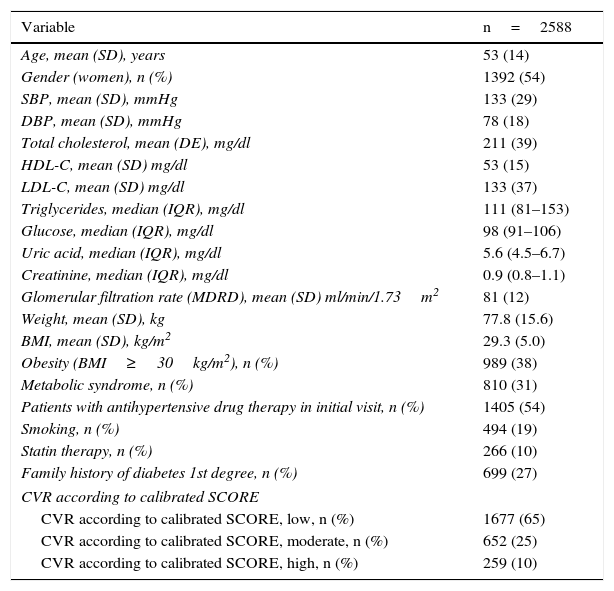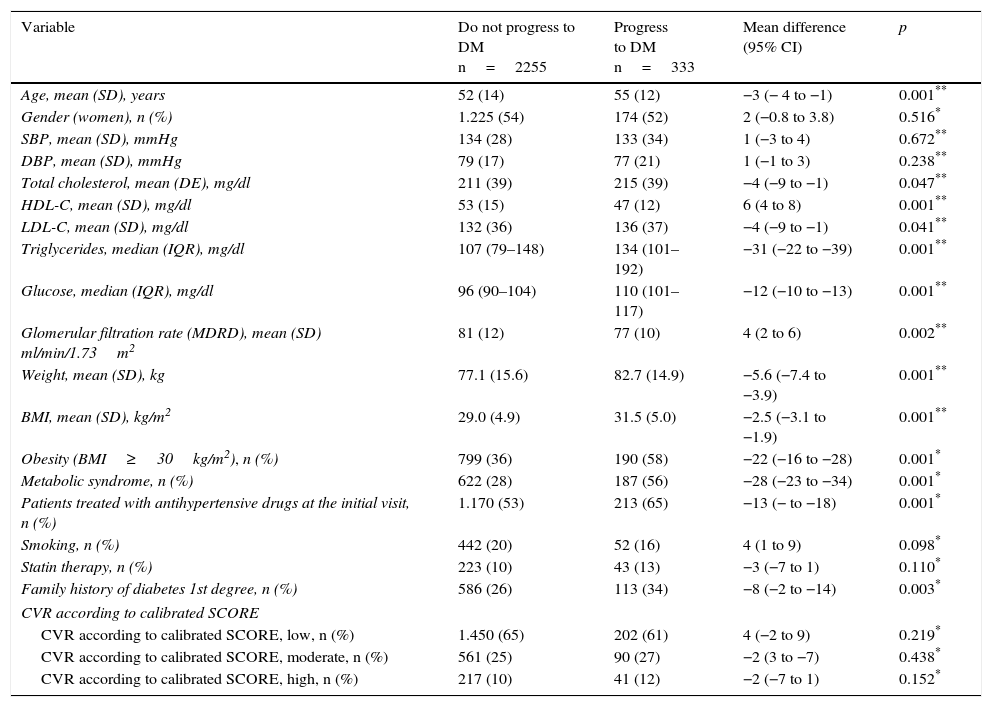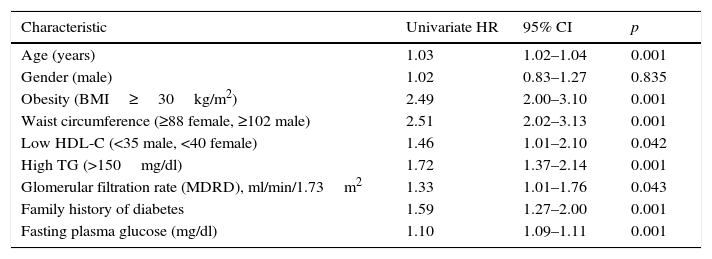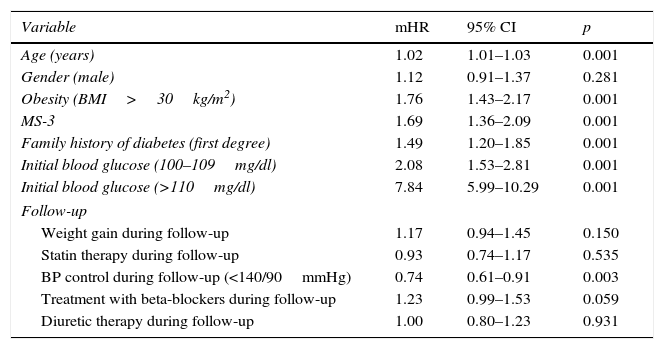The aim of this study was to assess the factors related to new diabetes in hypertensive.
Patients and methodsThis prospective follow-up study involved 2588 non-diabetic, hypertensive patients. The total follow-up was 15,053 patient-years with a median of 3.4 years (interquartile interval 1.4–6.8).
ResultsDuring the follow-up, 333 (13%) patients had new diabetes, with a conversion rate of 2.21 (95% confidence interval [CI], 1.98–2.46) 100/patients/year. In a Cox proportional hazard model including baseline characteristics and modifications during the follow-up the three components of metabolic syndrome (excluding blood pressure and glucose values) HR 1.69 (95% CI, 1.36–2.09), family history of diabetes HR 1.49 (95% CI, 1.20–1.85) and baseline blood glucose ≥110mg/dl HR 7.84 (95% CI, 5.99–10.29) were the most important factors related to new diabetes. Weight variation during the follow-up, and statins, beta-blockers or diuretic treatment did not increase the risk of new diabetes, blood pressure control at the end of study reduce the risk HR 0.74 (95% CI, 0.61–0.91).
ConclusionsIn hypertensive non-diabetic patients in primary prevention the factors related to new diabetes can easily identified at the beginning of follow-up. Being obese, with family history of diabetes, and glucose values ≥110mg/dl dramatically increase the risk of developing new diabetes.
Valorar los factores que predisponen a la aparición de diabetes en hipertensos.
Pacientes y métodoEstudio longitudinal prospectivo en 2.588 hipertensos no diabéticos sin enfermedad cardiovascular previa, con una mediana de seguimiento (mediana-intervalo intercuartílico) de 3,4 (1,4-6,8) años, con seguimiento total de 15.053 pacientes/año.
ResultadosTrescientos treinta y tres (13%) pacientes se convirtieron en diabéticos, con una tasa de conversión de 2,21 (intervalo de confianza del 95% [1,98-2,46]) 100/pacientes año. Se realizó un análisis de regresión de Cox con los factores que modificaban la aparición de diabetes. Al inicio del seguimiento los tres componentes del síndrome metabólico (excluyendo los valores de presión arterial y de glucemia) HR 1,69 (intervalo de confianza del 95%, 1,36-2,09), los antecedentes familiares de diabetes HR 1,49 (intervalo de confianza del 95%, 1,20-1,85) y especialmente la glucemia basal 110 mg/dl HR 7,84 (intervalo de confianza del 95%, 5,99-10,29) eran los factores mas importantes para la aparición de la diabetes. Ni las variaciones de peso ni el tratamiento con estatinas, betabloqueantes o diuréticos durante el seguimiento mostraron un incremento del riesgo, solo el buen control de la presión arterial al final del estudio redujo el riesgo de evolución a diabetes HR 0,74 (intervalo de confianza del 95%, 0,61-0,91).
ConclusionesEn hipertensos los factores que predisponen a la aparición de diabetes se pueden identificar fácilmente al inicio del seguimiento: ser obeso, tener antecedentes familiares de diabetes y una glucemia ≥ 110 mg/dl multiplican notablemente el riesgo de ser diabético en unos pocos años.












